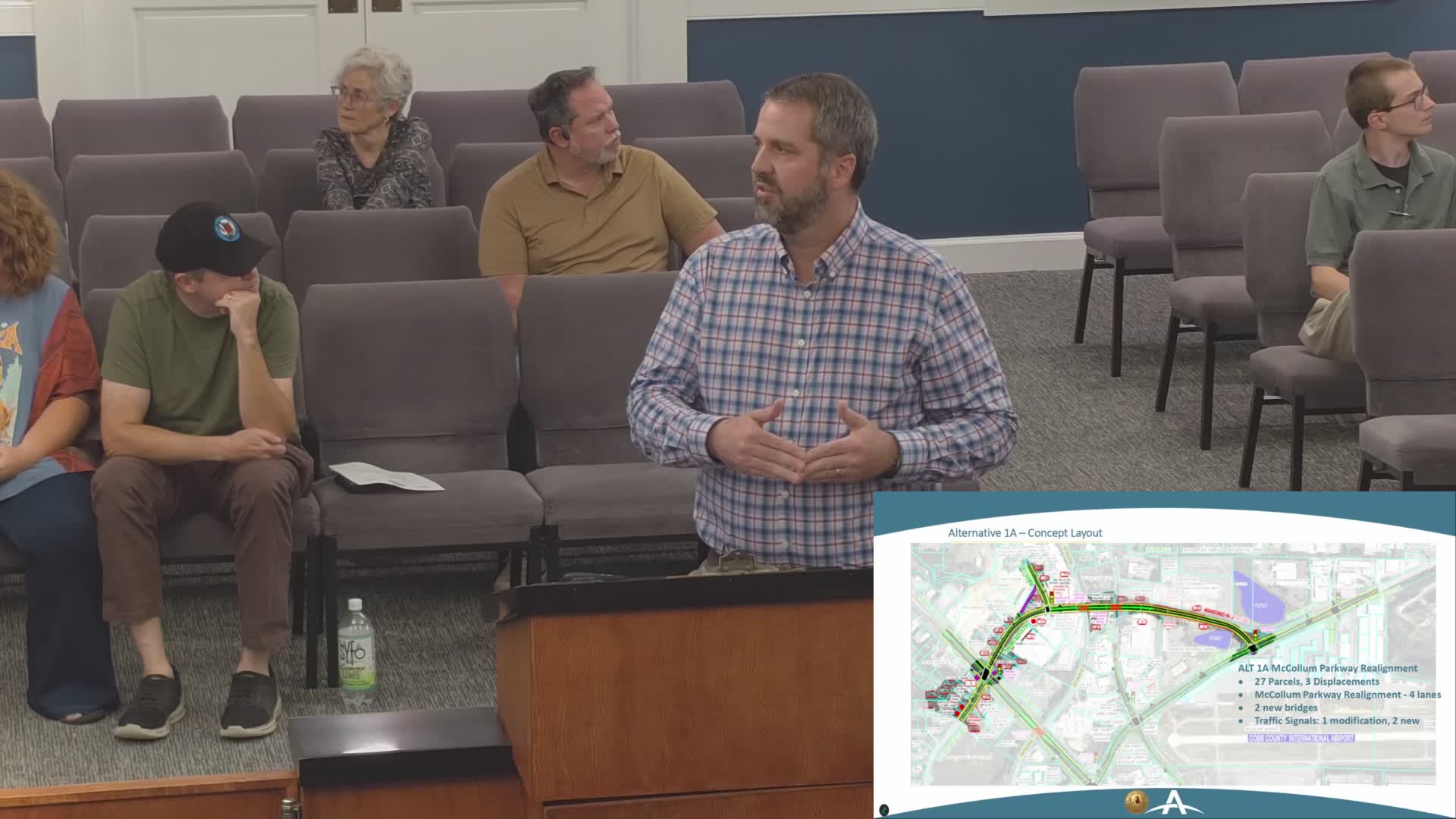City plans major traffic overhaul to ease congestion
September 30, 2024 | Kennesaw, Cobb County, Georgia
This article was created by AI summarizing key points discussed. AI makes mistakes, so for full details and context, please refer to the video of the full meeting. Please report any errors so we can fix them. Report an error »

In a recent government meeting, officials discussed three proposed alternatives for improving traffic flow and connectivity in Kennesaw, focusing on the intersection of Summer Street and Cobb Parkway. The proposals aim to address significant congestion issues, particularly during peak hours, where current traffic levels are rated at a level of service E, indicating near-failure conditions.
The first alternative, which seeks to utilize existing right-of-way, faces challenges due to its proximity to new apartment developments and limited lane capacity. This option is estimated to cost $33 million but has a low benefit-cost ratio, suggesting it may not provide sufficient benefits to justify the expense.
The second alternative proposes a new, grade-separated roadway that would run under an existing railroad bridge. This option shows improved travel times, particularly in the evening, with a benefit-cost ratio of 1.33, indicating a more favorable balance of costs and benefits compared to the first alternative.
The third alternative, which involves a more extensive right-of-way acquisition, offers the most favorable traffic flow results and significantly reduces travel times by about 10 minutes during peak hours. However, it comes with the highest estimated cost of the three options at approximately $40 million and boasts a benefit-cost ratio of 1.96.
Officials emphasized the importance of maintaining connectivity to downtown Kennesaw, particularly along Old 41, which remains unchanged in all proposed scenarios. Concerns were raised about potential negative impacts on local businesses and traffic patterns, especially regarding FedEx operations and truck traffic to Cobb International Airport.
A public meeting is tentatively scheduled for November 12 to gather community feedback on the proposed alternatives before finalizing the concept report. However, the meeting date may be adjusted due to the Veterans Day holiday. The discussions highlighted the ongoing challenges of balancing traffic management with community needs and the potential implications for local businesses and infrastructure.
The first alternative, which seeks to utilize existing right-of-way, faces challenges due to its proximity to new apartment developments and limited lane capacity. This option is estimated to cost $33 million but has a low benefit-cost ratio, suggesting it may not provide sufficient benefits to justify the expense.
The second alternative proposes a new, grade-separated roadway that would run under an existing railroad bridge. This option shows improved travel times, particularly in the evening, with a benefit-cost ratio of 1.33, indicating a more favorable balance of costs and benefits compared to the first alternative.
The third alternative, which involves a more extensive right-of-way acquisition, offers the most favorable traffic flow results and significantly reduces travel times by about 10 minutes during peak hours. However, it comes with the highest estimated cost of the three options at approximately $40 million and boasts a benefit-cost ratio of 1.96.
Officials emphasized the importance of maintaining connectivity to downtown Kennesaw, particularly along Old 41, which remains unchanged in all proposed scenarios. Concerns were raised about potential negative impacts on local businesses and traffic patterns, especially regarding FedEx operations and truck traffic to Cobb International Airport.
A public meeting is tentatively scheduled for November 12 to gather community feedback on the proposed alternatives before finalizing the concept report. However, the meeting date may be adjusted due to the Veterans Day holiday. The discussions highlighted the ongoing challenges of balancing traffic management with community needs and the potential implications for local businesses and infrastructure.
View full meeting
This article is based on a recent meeting—watch the full video and explore the complete transcript for deeper insights into the discussion.
View full meeting
